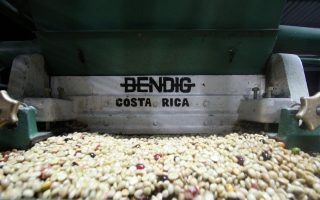Coffee is one of the world’s most beloved beverages, and the secret to its quality lies in the regions where it’s grown—the Coffee Belt. This imaginary belt wraps around the globe, stretching between the Tropics of Cancer and Capricorn, where the climate and conditions are ideal for coffee cultivation. From the lush mountains of Latin America to the highlands of East Africa, the Coffee Belt is home to some of the most flavorful and unique coffee varieties. Understanding where coffee thrives helps us appreciate its journey.
What is the Coffee Belt?
The Coffee Belt refers to the geographical zone located between the Tropics of Cancer and Capricorn, where the ideal climate for coffee cultivation is found. This belt encompasses more than 70 countries across Latin America, Africa, and Asia-Pacific, all of which provide the necessary balance of warm temperatures, ample rainfall, and high altitudes. Coffee plants thrive in these regions due to the rich, fertile soil and consistent weather patterns. From Brazil to Ethiopia, the Coffee Belt produces the majority of the world’s coffee, each region offering unique flavors and characteristics.
Ideal Growing Conditions
Coffee thrives in very specific conditions, making the Coffee Belt the perfect location for cultivation. The ideal environment includes warm temperatures, typically between 60°F and 70°F (15°C to 24°C), along with consistent rainfall. Altitude plays a key role too—higher elevations allow for slower coffee bean development, which results in more complex flavors. Rich, well-drained soil is essential to support the growth of coffee plants. These conditions create the perfect environment for producing high-quality beans with distinct regional flavors, ranging from fruity and floral to earthy and bold.
Key Coffee-Producing Regions
The Coffee Belt spans three major regions: Latin America, Africa, and Asia-Pacific, each contributing unique flavors and characteristics to the global coffee scene.
- In Latin America, countries like Brazil and Colombia are known for producing smooth, nutty coffees with bright acidity.
- Africa, particularly Ethiopia and Kenya, is famous for fruity, floral coffees with complex flavor profiles.
- The Asia-Pacific region, including Vietnam and Indonesia, produces more earthy, bold coffees, often using Robusta beans. Each region’s unique climate and soil shape the distinctive flavors we enjoy in every cup.
Varieties of Coffee Grown in the Coffee Belt
Two main coffee species dominate the Coffee Belt: Arabica and Robusta.
- Arabica beans, known for their smooth, delicate flavors, are grown at higher altitudes and thrive in regions like Latin America and East Africa. These beans are often more expensive due to their nuanced flavor profiles, with hints of fruit, floral, or sweet notes.
- Robusta, grown in regions like Vietnam and parts of Africa, is hardier, producing beans with a stronger, more bitter taste, often used in espresso blends for their bold body.
Impact of the Coffee Belt on Global Coffee Trade
The Coffee Belt plays a vital role in the global coffee trade, supplying the vast majority of the world’s coffee. The economies of many countries in this region, such as Brazil, Ethiopia, and Vietnam, are heavily reliant on coffee exports. Coffee from the Coffee Belt also drives international demand for distinct flavor profiles, influencing everything from specialty cafes to global supply chains. However, climate change, fluctuating prices, and labor challenges are ongoing concerns that impact both production and trade in these regions.
Conclusion
The Coffee Belt is essential to understanding why coffee varies so much in flavor and quality across the world. Stretching across diverse regions from Latin America to Africa and Asia-Pacific, it provides the ideal climate for growing coffee, producing everything from the floral and fruity notes of Ethiopia to the bold, earthy flavors of Indonesia. As consumers, appreciating the role of the Coffee Belt helps us recognize the global effort behind every cup of coffee and the challenges these regions face in sustaining this vital industry.



